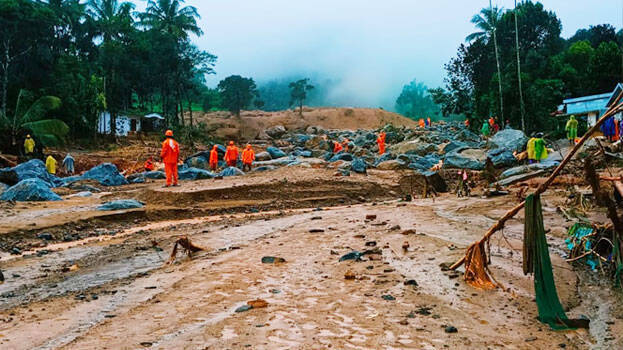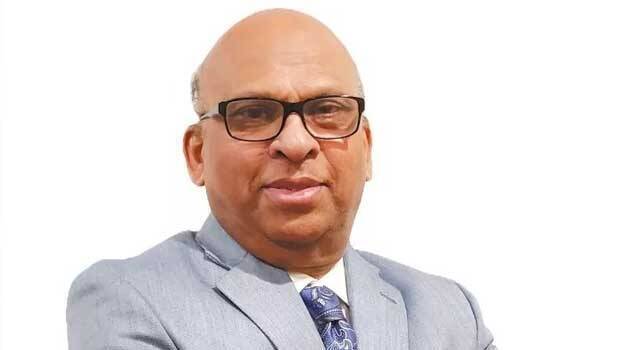

The official death toll from the landslide disaster in Wayanad is confirmed to be 221. However, unofficial reports suggest that over 400 people have died, with many still missing. Several days after the disaster occurred on the night of July 30, 2024, numerous bodies were recovered from places like the Chaliyar River. The bodies were found in a state of advanced decomposition and disintegration, making identification difficult. The victims, regardless of their religion or caste, will now rest together in a tea plantation. For those who narrowly escaped the disaster, life has become a significant question mark. With everything they had worked for and earned washed away by the flood, they face an uncertain future. In this state of helplessness, it is the responsibility and duty of the government and society to provide them with rehabilitation. Only by extending compassion and care can the disaster victims hope to rise again.
The Western Ghats, including the Wayanad hill ranges, are environmentally sensitive areas, and environmental scientists have long warned that natural disasters like landslides could occur in these regions at any time. The Madhav Gadgil Committee had strongly recommended stringent controls for the protection of the Western Ghats. However, there was strong opposition to the report in Kerala. Consequently, the UPA government appointed the Kasturirangan Committee to study the issue. Although the Kasturirangan Committee submitted a diluted version of the Gadgil report, disagreements continued. Later, during the tenure of the Oommen Chandy government, the Oommen V. Oommen Committee conducted a study and submitted a report. Yet, opposition and controversy remained.
According to the Kasturirangan report, 9,993.7 square kilometres in Kerala were designated as environmentally sensitive areas (ESA). However, Kerala's stance was to exclude 1,337.24 square kilometres from this designation. The central government did not approve Kerala's request. Even though the central government has issued a draft notification for the protection of the Western Ghats for the sixth time, Kerala has not altered its stance. The 13 villages, including Noolpuzha in Wayanad, where the disaster occurred, are within the areas included in the central government's draft notification. The central government's position is that 8,656.46 square kilometres in Kerala should be considered ESAs with no exemptions, while 1,337.24 square kilometres should be considered ESAs with certain exemptions. Expert committees had reported a year ago that uncontrolled tourism construction activities in the Mundakkai-Chooralmala area, where the landslide occurred, could lead to landslides. About thirty resorts are operating in this area. Due to the adverse impact of these construction activities on the habitats of numerous endangered species, the High Court directed a special committee to conduct inspections.
Union Minister for Environment, Forest and Climate Change Bhupender Yadav states that illegal immigration and quarrying in Wayanad, with the connivance of the administration, have contributed to the natural disaster. "In the past decade, the Ministry of Environment has not approved any development activities in Wayanad. Only the construction of the tunnel road from Kalladi to Meppadi has been approved, and that construction has not yet begun. Local politicians have provided protection for illegal human settlements in Wayanad. Encroachments were allowed in extremely fragile areas," Minister Bhupender Yadav alleges.
It is a reality that we, the people of Kerala, are not taking steps to protect this beautiful land blessed by nature. Kerala has lost its natural forest cover. Rivers and other water sources have been destroyed. Incorrect land use, illegal quarrying, and accumulating waste have all become threats to Kerala's survival. Political leadership, which seeks shortcuts to power, has attempted to ignore and belittle the warnings given by wise people like Madhav Gadgil. Madhav Gadgil reminded us not long ago that Kerala would pay a heavy price if the Western Ghats were not protected. In 2013, he said, "The Western Ghats are being utterly destroyed. If no action is taken, Kerala is headed for a major disaster. It won't take millennia as you might think, but only four or five years. You and I will still be alive then. You'll understand who was lying and who was scared."
Now, the disaster victims in Wayanad need the care and compassion of those who are safe. There should be no delay in identifying and taking action against illegal activities that cause disasters. Collective support must be provided for the survival and rehabilitation of the disaster-affected people. We must also recognize that the threat of natural disasters is not confined to Wayanad alone.

* (The author is former president of FOKANA and chairman of the NAMAM Foundation - USA)